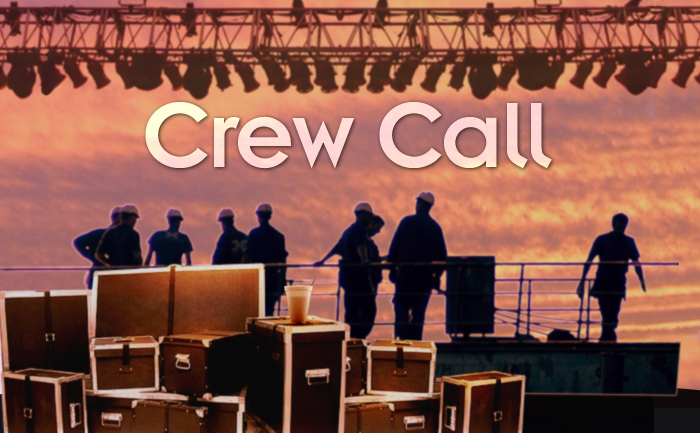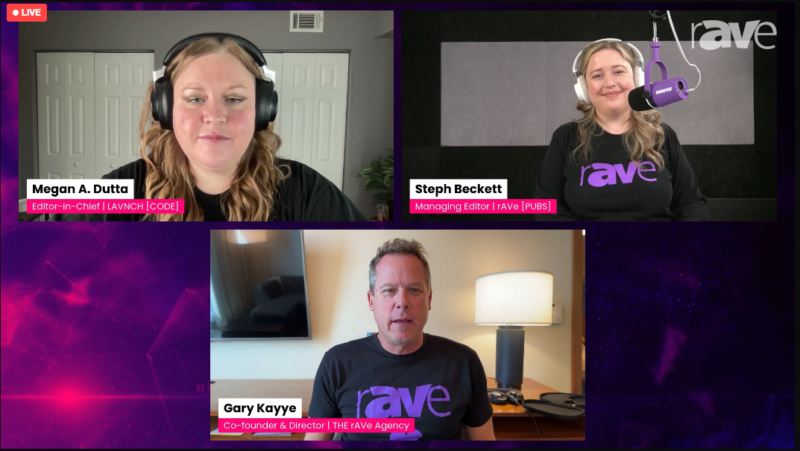Inventory for Collaboration in the Rental Market
 Last month, we talked about the market’s trend toward collaborative meetings and how that will presumably affect the rental and staging company and its employees. I thought then, and I still do, that the most important aspect of this change was one of familiarizing our employees with the concepts and techniques of collaborative meetings. This is because our clients, while interested in the technology that they see in the airline magazines, are not yet completely comfortable with the concept of making meetings collaborative and sometimes not even with the concept of collaborative hardware. My best suggestion on that front was that we need to make our employees users of the technology in order to help them make our customers comfortable with it.
Last month, we talked about the market’s trend toward collaborative meetings and how that will presumably affect the rental and staging company and its employees. I thought then, and I still do, that the most important aspect of this change was one of familiarizing our employees with the concepts and techniques of collaborative meetings. This is because our clients, while interested in the technology that they see in the airline magazines, are not yet completely comfortable with the concept of making meetings collaborative and sometimes not even with the concept of collaborative hardware. My best suggestion on that front was that we need to make our employees users of the technology in order to help them make our customers comfortable with it.
But one of the most common questions that I received after the article was about inventory. (Actually, when you talk to rental managers, most questions eventually get around to inventory). So I thought that I would take a stab at some suggestions that may help you make your inventories more collaborative.

Probably the most visible piece of equipment that people associate with the movement towards collaborative meetings is the touchscreen. Several of the dominant players in the computer market have introduced large touchscreens specifically marketed for collaboration. Among these are the Microsoft Surface Hub, the Google Jamboard and the Cisco Spark Board. These players are doing the bulk of the advertising in the market and will probably be the products that clients ask for by name after having seen one of their many commercials, printed ads or Internet banner ads. However, they may not be yet appropriate for the rental market, as one aspect of these three big players is that they attempt to integrate the meeting into their dedicated ecosystem. In other words, to achieve full value from them, you must also use their software and collaboration methods. For the rental company, a more prudent investment is probably to invest in making a portion of your large-screen rental inventory touchscreens. The price of touchscreens has come down radically and their appearance has become more common with their non-touchscreen siblings, meaning that large-screen touchscreens can be rented into roles: touchscreen use and normal display use. Combining them with one of the cloud-based collaboration systems (I personally love WebEx, but there are many) will enable you to make a meeting collaborative and satisfy the client’s need for touchscreen use without attempting to force them into one particular ecosystem or another. An important tip: Make sure that any touchscreen you buy is fully functional as a multi-touch touchscreen without using any dedicated software. In other words, the screen should respond as a touchscreen using only the drivers that are built into Windows, the Macintosh OS or Linux. This prevents you from having to help clients install dedicated touchscreen software that may interfere with other things that they are doing with their computer.
Another of the equipment lines associated with the collaborative meeting process is the response system. I have been working with response systems for nearly 30 years, from a number of suppliers, and the full-blown response system has a lot of important uses. However, today each client enters the room with a smart phone in his or her pocket that is perfectly functional for many response needs. While I do not recommend specific equipment in this column, you can easily see from articles here in rAVe that there are a variety of cloud-based systems available now for response. These systems remove one of the big complications from traditional response systems in that the cloud-based systems have no problem integrating the input from multiple sites. And the cloud-based systems play well with the next item in our collaboration inventory, social media coverage displays.
Although I am not the biggest fan of social media, as my friends will tell you, it has become a staple part of collaborative meetings, where we view each other’s opinions and thoughts 140 characters at a time. Therefore, an equipment package comprised of large screens that can monitor a groups social media feeds during the meeting is an integral part of the collaborative meeting scenario.
Another of the most important categories in this area are meeting recording and streaming systems. While we in the rental industry have always offered recording as a staple of our stock in trade, today’s meeting demands additional uses from the recording equipment. Today, the system needs to stream live to the web, simultaneously stream to social media (like Facebook) and record the meeting for later use. In many of these instances, the uses of these recordings are not determined in advance (or, worse yet, they are determined on the day of the meeting), so it is important to be able to accommodate as many of the scenarios as possible.
You will probably note that much of this equipment includes items that we already have an inventory. Often in this market, it is only necessary to repackage or repurpose existing gear in order to offer it as collaborative equipment. As I said last month, the important factor here is not the hardware, it’s the human factor. This change in meetings is not a fad — it’s been brought about by economic and business circumstances in the increasingly shrinking world. If we are to stay on top of it, it will be our line employees who make it possible.




